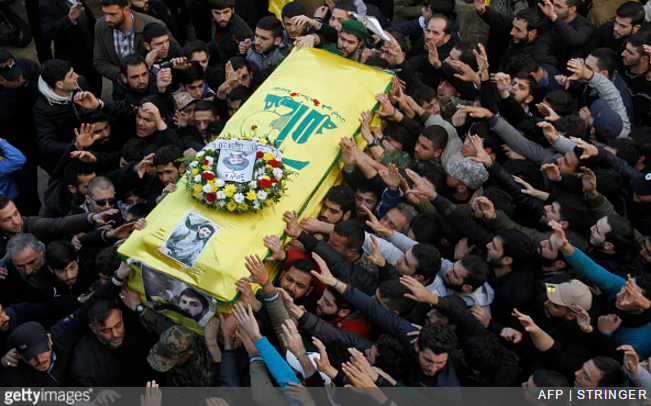On May 25, 2013, Hezbollah chief Sayyed Hassan Nasrallah declared that the Lebanese Shi’ite paramilitary organization had officially joined the war in Syria, and was fighting alongside the Syrian Arab Army and pro-government militias.
With this move, Hezbollah – founded with the purpose of fighting Israel at a time when much of southern Lebanon was under its occupation – was entering a new era. Though not the first time Hezbollah operated outside of a Lebanese-Israeli paradigm, it was the first time Hezbollah claimed a foreign war fell within its purview. “It is our battle, and we are up for it,” Nasrallah declared in one of his televised speeches.
By the time of Nasrallah’s declaration, Hezbollah had already been in Syria for at least a year, but in a far more limited capacity. Some fighters were alleged to also be defending Sayyidah Zeinab, a shrine holy to Shi’ites located outside of Damascus, which was threatened by rebel jihadists. Hezbollah denied these claims, though did acknowledge that it was defending border villages, and that some members had made an individual decision to join the fighting. Given these fighters’ involvement in the war, components of Hezbollah have been involved in the Syrian conflict since as early as 2011, and in 2012 the U.S. sanctioned Hezbollah for what it described as its “integral role” in the war.
By early 2013, Hezbollah had entered the war in Syria in force, taking control of several border towns and striking at opposition groups in response to rocket attacks against Hezbollah-linked areas.
Hezbollah’s intervention, one of the first of several that would reverse the military fortunes of the Assad regime, soon made the group a major player in the war. Without Hezbollah’s aid, it is likely that Assad would not have been able to sustain the force of loyal fighters he needed to maintain his position, especially given the billions of dollars in aid Syrian opposition fighters received from both NATO members and Gulf Arab states. The many non-Syrians who traveled to join the fight against the Syrian government meant that Syrian troops were at risk of being outnumbered as well as outgunned.
The material effects of Hezbollah’s deployment in Syria were felt almost immediately. In June 2013, Syrian troops and Hezbollah defeated rebels in the town of al-Qusayr, ten miles away from the Lebanese-Syrian border, after a two-week battle. The town was symbolic, as a year earlier the fighting there ended in a stalemate after two months, leaving the northern half of the town in opposition hands and the southern half under government control.
By early 2017, from the city of Aleppo down to the Damascus countryside, Hezbollah was involved in some of the conflict’s most brutal and strategic battles, helping to cement Syrian government control. The group is believed to have lost more than 1,500 fighters. By comparison, it is believed to have lost a little more than 1,200 fighters in all the 15 years it fought against the Israeli occupation of southern Lebanon.
For Hezbollah, there is far more to gain than to lose in Syria. Though its public image took a hit as a result of its collaboration with the Assad regime, it is believed to be at an all-time high in terms of membership and fighters. With enemies like the Islamic State of Iraq and the Levant (ISIL) and al-Qaeda, groups that vow to eliminate Shi’ite populations, many Shi’ites are joining Hezbollah to fight against what they see as an existential threat.
Hezbollah has historically been perceived as a disciplined fighting force, and this could in part be due to its relatively small size as a militia. A few years ago, the group was thought to count no more than a couple thousand fighters as members. Conservative estimates now put the organization’s number at 30,000 fighters. As long as Lebanese Shi’ites continue to see an existential threat across the border, this number should not be expected to decrease. However, one downside of fielding a larger force is the increased potential for infiltration, especially by Israeli intelligence.
The Syrian war has given Hezbollah the previously unattainable but valuable experience of fighting battles outside of Lebanon. The organization has long specialized in defensive guerrilla warfare, seeking to repel attacks instead of launching them. However, years of leading battles and advancing into new territory in Syria prove the group’s mettle as a potent offensive force. Nasrallah has vowed that, in any future conflict with Israel, he would take the battle into Israeli territory – and Syria is teaching his fighters how to do that.
Undoubtedly, Hezbollah’s greatest gain from its participation in Syria is the debt that Assad’s government will owe it. Hezbollah’s aid to the Syrian government may have been self-motivated: securing its line of supply for weapons, keeping an ally in power over a crucial country, and learning how to fight offensively. Nevertheless, its help cannot be expected to go unreciprocated, especially given Hezbollah’s heavy losses. Syrian aid is crucial to the group’s conflict with Israel. Despite being officially at war with Israel and funding groups hostile to it, the Syrian government has kept its border with Israel quiet. Assad, like his father, preferred to avoid direct combat with Israel. Hezbollah might now feel entitled to use Syrian territory in future conflicts with Israel, possibly drawing Syria into the fray as well.
The Syrian civil war continues to rage, and the tide may turn yet again. However, with momentum now firmly in the hands of the government, it is important to consider what the future holds. Hezbollah knows that another war with Israel is a possibility. Its participation in the war in Syria can be seen as an investment for the group – but we will not know until the next conflict whether it will pay off.
